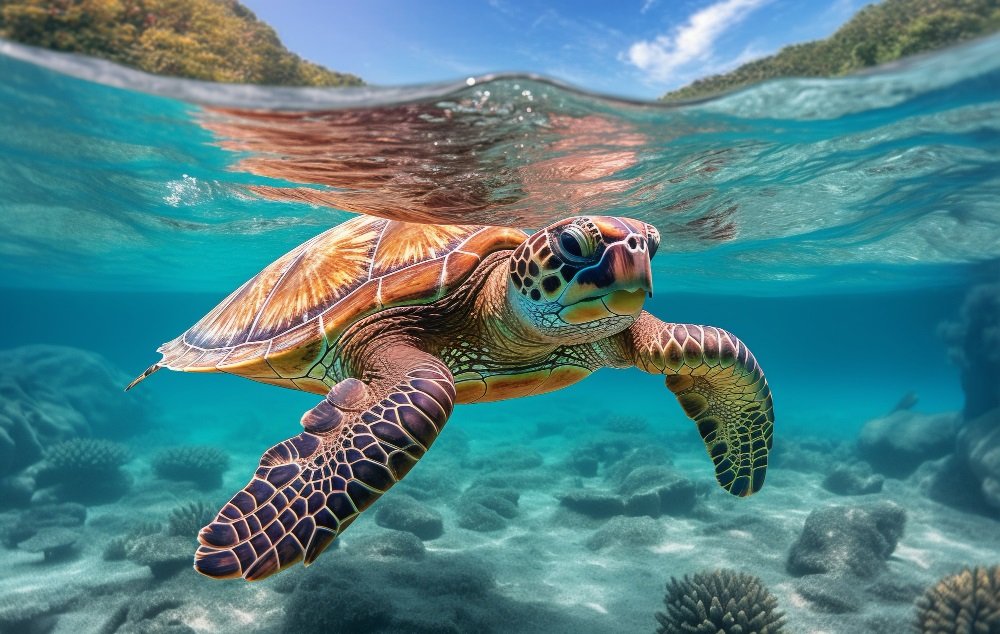When it comes to understanding the life cycle and habits of baby turtles, one of the most crucial aspects to explore is their diet. Baby turtles, also known as hatchlings, face numerous challenges as they make their way into the ocean, and their diet plays a significant role in their survival and growth. In this article, we will delve into the fascinating world of baby turtles and explore what they eat in the ocean, highlighting the importance of their diet and how it impacts their development.
Understanding the Diet of Baby Turtles
Baby turtles, typically measuring around 4-5 cm in length, emerge from their eggs on the beach and make their way into the ocean. At this stage, they are vulnerable to predators and face numerous challenges, including finding food. Their diet in the ocean is crucial for their survival, as it provides them with the necessary nutrients for growth and development. In the ocean, baby turtles encounter a diverse range of food sources, which are essential for their survival.
A Glimpse into the Oceanic Diet of Baby Turtles
In the ocean, baby turtles feed on a variety of food sources, including jellyfish, seaweed, and small invertebrates. They also consume carrion and other organic matter, which provides them with essential nutrients. As they grow and mature, their diet expands to include a wider range of food sources, including crustaceans, mollusks, and fish. In this article, we will explore the different types of food that baby turtles eat in the ocean, and how their diet impacts their development and survival.
What Do Baby Turtles Eat in the Ocean?
Baby turtles, also known as hatchlings, face a challenging journey as they venture into the ocean for the first time. One of the most critical aspects of their survival is finding the right food to sustain them. In this article, we will delve into the fascinating world of baby turtles and explore what they eat in the ocean.
The First Few Days: Yolk Sac Nutrition
After hatching, baby turtles rely on the yolk sac, a nutrient-rich sac attached to their belly, for sustenance. The yolk sac provides them with the necessary energy and nutrients to support their initial growth and development. During this period, which can last up to a week, baby turtles do not need to eat anything else.
Initial Foraging: Ocean Currents and Debris
As the yolk sac is absorbed, baby turtles begin to venture into the ocean, where they encounter a vast array of food sources. Initially, they feed on whatever they can find in the ocean currents, including:
- Phytoplankton: microscopic plants that drift in the ocean
- Zooplankton: small animals, such as krill and copepods, that inhabit the ocean
- Detritus: decaying organic matter, including dead plants and animals
- Marine debris: small pieces of trash, such as plastic and fishing gear
These food sources are abundant in the ocean and provide baby turtles with the necessary nutrients for growth and development.
Primary Food Sources: Jellyfish and Sea Squirt
As baby turtles grow and mature, they begin to focus on more substantial food sources. Two of their primary food sources are: (See Also: How Do Turtles Eat)
Jellyfish
Jellyfish are an essential food source for many marine animals, including baby turtles. They are rich in protein and provide a convenient meal for these young reptiles. Baby turtles have been observed feeding on jellyfish in the ocean, using their sharp beaks to tear apart the jellyfish’s umbrella-like bodies.
Sea Squirt
Sea squirts, also known as tunicates, are marine animals that attach themselves to rocks and reefs. They filter food particles from the water, making them an ideal meal for baby turtles. Sea squirts are rich in nutrients and provide a valuable source of energy for these young turtles.
Other Food Sources: Crustaceans and Mollusks
In addition to jellyfish and sea squirts, baby turtles also feed on:
- Crustaceans: crabs, shrimp, and lobsters
- Mollusks: clams, mussels, and snails
- Fish: small fish, such as sardines and anchovies
- Algae: seaweed and other marine plants
These food sources provide baby turtles with a diverse range of nutrients, including protein, carbohydrates, and vitamins.
Feeding Behavior: Active Hunting and Scavenging
Baby turtles employ various feeding behaviors to obtain food in the ocean. These include:
Active Hunting
Baby turtles are active hunters, using their sharp senses to locate and catch prey. They have been observed chasing down small fish and crustaceans, using their speed and agility to catch their quarry.
Scavenging
In addition to active hunting, baby turtles also engage in scavenging behavior. They feed on carrion, including dead fish and other marine animals, which provides them with a valuable source of nutrients.
Importance of Nutrition: Growth and Development
Nutrition plays a critical role in the growth and development of baby turtles. A diet rich in nutrients is essential for: (See Also: Turtles In Dream Meaning)
- Growth: providing energy and building blocks for growth and development
- Immune system development: supporting the development of a healthy immune system
- Energy reserves: building energy reserves for future growth and development
A well-nourished baby turtle is better equipped to survive the challenges of the ocean and reach adulthood.
Conservation Implications: Threats to Baby Turtle Nutrition
Baby turtles face numerous threats to their nutrition in the ocean, including:
- Overfishing: depleting fish populations, which can impact baby turtle food sources
- Pollution: ingesting plastic and other pollutants, which can harm their health and development
- Habitat destruction: destroying coral reefs and other habitats, which can reduce food availability
- Climate change: altering ocean temperatures and chemistry, which can impact food webs and availability
Conservation efforts are essential to protect baby turtles and their food sources, ensuring the long-term survival of these incredible creatures.
Recap: What Do Baby Turtles Eat in the Ocean?
In conclusion, baby turtles eat a diverse range of food sources in the ocean, including jellyfish, sea squirts, crustaceans, mollusks, fish, and algae. They employ various feeding behaviors, such as active hunting and scavenging, to obtain these food sources. Nutrition plays a critical role in their growth and development, and conservation efforts are necessary to protect their food sources and habitats.
Key Takeaways:
- Baby turtles rely on the yolk sac for nutrition during the first few days
- They feed on ocean currents, debris, and small animals in the initial stages
- Jellyfish and sea squirts are primary food sources for baby turtles
- They employ active hunting and scavenging behaviors to obtain food
- Nutrition is critical for growth, immune system development, and energy reserves
- Conservation efforts are necessary to protect baby turtle food sources and habitats
By understanding what baby turtles eat in the ocean, we can better appreciate the importance of conservation efforts and work to protect these incredible creatures and their habitats.
Frequently Asked Questions: What Do Baby Turtles Eat In The Ocean
What is the primary source of food for baby turtles in the ocean?
Baby turtles, also known as hatchlings, primarily feed on jellyfish, seaweed, and other soft-bodied organisms in the ocean. They also consume small crustaceans, like brine shrimp and plankton, which are rich in nutrients. (See Also: Why Do Mother Turtles Leave Their Eggs)
Do baby turtles eat the same food as adult turtles?
No, baby turtles have different dietary needs than adult turtles. Hatchlings require a diet rich in protein and fat to support their rapid growth and development. As they mature, their diet shifts to include more vegetation and algae, similar to adult turtles.
How do baby turtles find food in the ocean?
Baby turtles use their sense of smell and vision to locate food in the ocean. They are also attracted to areas with high productivity, such as coral reefs or seaweed beds, where food is more abundant. Additionally, they may follow the ocean currents to find food sources.
Can baby turtles eat human-provided food, like fish food or bread?
No, it’s not recommended to feed baby turtles human-provided food, like fish food or bread. These foods can be harmful to their health and may cause nutritional imbalances or digestive problems. It’s best to let them forage for their natural food sources in the ocean.
How often do baby turtles eat in the ocean?
Baby turtles eat frequently in the ocean, especially during their first few weeks of life. They may eat every few hours, depending on their energy needs and the availability of food. As they grow and mature, their feeding frequency may decrease, but they still require a consistent food supply to support their growth and development.


